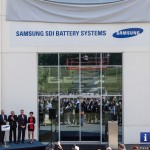- 10/02/2016
- Morocco, Noor complex, solar plant, Technology, More Categories...
- Posted by Darryn Van Hout
- No comments yet
What will be the largest concentrated solar power plant in the world has just been switched on in Ourrzazate, Morocco.
Sitting right on the edge of the Saharan desert across thousands of acres is the Noor complex solar plant.
It can already generate up to 160 megawatts of power but upon completion it will be able to reach a huge 580 megawatts; potentially enough energy to power in excess of one million homes by the year 2018.
According to the Climate Investment Funds (CIF) finance group, the plant will decrease the amount of carbon emissions by a predicted 760,000 tonnes every year.
On February 4 this year the initial phase of the project’s three phases was started by His Majest Mohammed VI of Morocco, with the click of a button.
The Noor complex is already up there with the biggest solar power grids worldwide, and there is still more to come.
How the Noor solar plant worksThe Noor [...]
- 27/01/2016
- Technology
- Posted by Erin Waldron
- No comments yet
Samsung has revealed a long-lasting electric vehicle (EV) battery prototype that may eliminate buyers concerns of a limited driving range.
It is designed to improve the futuristic cars driving range as well as reducing the impact to the environment in production.
Samsung SDI, the battery-making affiliate, unveiled the prototype at the recent Detroit Auto Show. The design sports a high-density prototype battery, which allows a driving range of up to 600 km off one single charge.
This is a vast improvement in comparison to other available batteries which can only reach 500 km without recharging.
Samsung is expected to start commercial production of the electric vehicle batteries by the year 2020.
Long-range batteries make EV’s more attractiveRange anxiety is a commonly faced issue of electric vehicle drivers/ potential buyers. Electric vehicle charging stations are becoming increasingly common these days, however they are very scarce compared to traditional fuel stations.
As many electric vehicles have a low driving range, the [...]
- 21/01/2016
- Technology
- Posted by Erin Waldron
- No comments yet
Over the next two decades, it’s expected that the number of electric vehicles worldwide will double.
The majority of this growth is expected to come from highly populated countries such as China and India, where having your own private vehicle is a relatively new thing due to their struggle keeping up economically with more developed Western nations.
However, both of these countries already have severe issues with air pollution- everyone suddenly being able to afford a car could be a huge disaster.
The city government of Dehli in India is already considering a plan of action to keep half of the cars at home on alternating days.
Introducing Ampere Vehicles…Southern India is home to the town of Coimbatore, where couple Hemalatha Annamalai and Bala Pachyappa are developing simple and affordable electric vehicles as transport for rural drivers.
Hemalatha, 47, is the CEO and founder of Ampere Vehicles Private Limited, which specializes in load carriers, electric [...]
- 20/04/2015
- Technology
- Posted by Tessa Romarez
- 1 Comment
There are solar powered cars available in the market today but many of them are for public use such as solar powered buses and solar-assisted trains. However, a recurring trend is the pairing of a home solar power system and a plug-in electric vehicle.
Many homes in the United States, Australia, and the UK have started relying entirely on solar power. With sufficient photovoltaic (PV) panels installed on the roof a house can run entirely off the grid.
Then there are plug-in electric vehicle models such as the BMW i3. Most of these vehicles are not hybrids and instead rely solely on electric power sources. All a person has to do is plug them in, charge them overnight, and the car will be ready to drive the next day.
These electric vehicles are not just affordable in terms of gas usage but are also much safer for the environment due to their lack of carbon [...]




